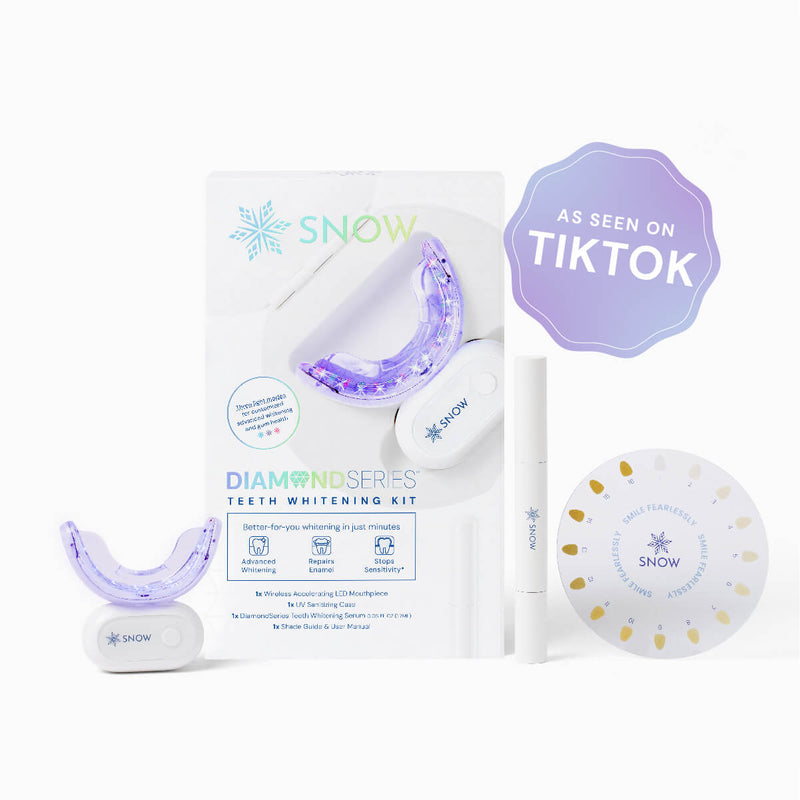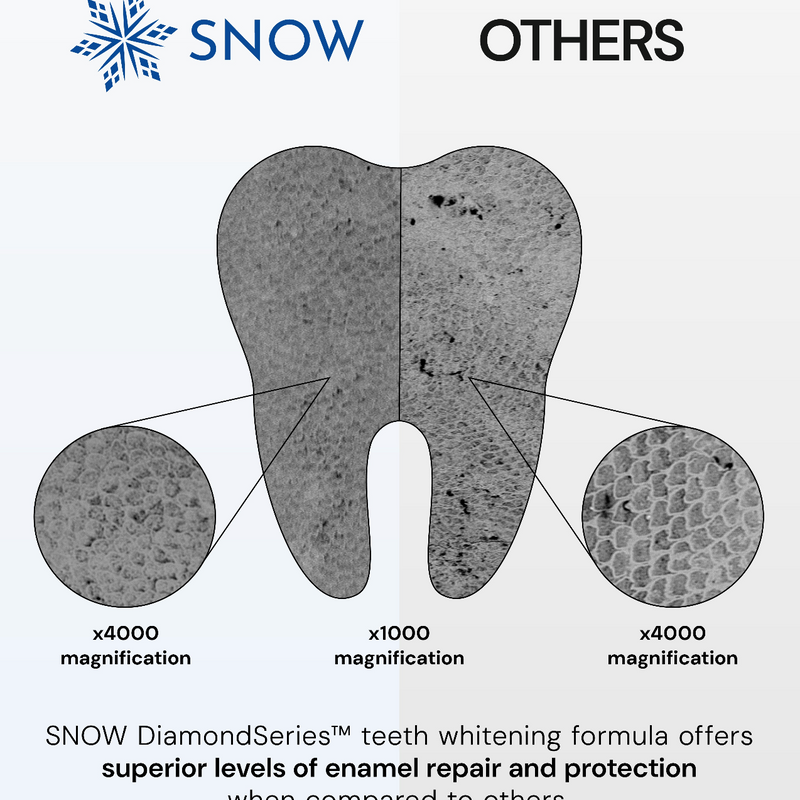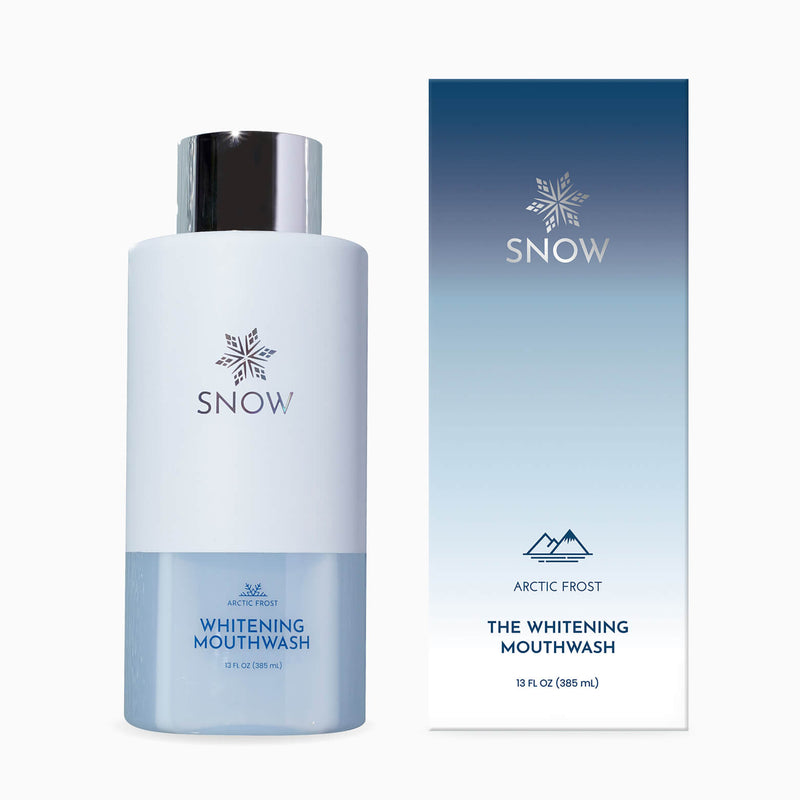Our findings show that flossing with braces is a common concern for many undergoing orthodontic treatment.
In this article, we will explore various flossing techniques, including traditional flossing, water flossers, and floss threaders. We'll also cover other tools like dental tape, explain why flossing is necessary with braces, and offer useful tips for making the process easier.
Let's dive into the details so you can maintain a healthy smile while wearing braces.
What this article covers:- Traditional Flossing
- Water Flosser
- Floss Threader
- Dental Tape
- Is Flossing with Braces Really Necessary?
Traditional Flossing
- Begin by cutting an 18 to 24-inch piece of dental floss.
- Insert the floss through a floss threader, a plastic tool designed to guide the floss beneath your braces' archwire.
- Push the threader under the archwire, ensuring the floss is correctly positioned behind the braces to access the space between your teeth.
- Once the floss is in place, wrap the ends around your index fingers for control and ease of movement.
- Carefully guide the floss between each pair of teeth, moving it in a gentle up-and-down motion. Make sure to curve the floss around each tooth in a "C" shape to clean along the gumline.
- Repeat this process for each gap between your teeth, using a fresh section of floss for better hygiene.
For those looking for an alternative to traditional floss, the SNOW Activated Charcoal Whitening Floss is an excellent choice. This bamboo-based floss gently expands to remove plaque and surface stains, while detoxifying your teeth and gums.
Water Flosser
- Start by filling the water flosser's reservoir with lukewarm water.
- Set the water flosser to a comfortable pressure level. It's often best to start on a lower setting, especially if you have sensitive gums.
- Place the water flosser's tip at a 90-degree angle to your gumline. Begin by aiming it between your teeth and around your braces brackets.
- Turn the device on, allowing the water to flow between your teeth, removing food particles and plaque that are hard to reach with traditional floss.
- Slowly guide the flosser tip along your gums and between each pair of teeth, making sure to clean around each bracket as well.
- Continue this process until you've cleaned all your teeth. Once finished, rinse your mouth with water to flush out any remaining debris.
Our research indicates that this method works across different situations, whether it's how to floss with permanent retainer or how to floss with permanent retainer without threader.
The SNOW Water Flosser is an excellent tool for anyone with braces. With three cleaning modes, it's gentle on sensitive gums and features a collapsible, portable design for easy use at home or on the go.
Floss Threader
- Cut an 18 to 24-inch piece of waxed floss, which will glide more easily between your teeth without getting caught in the braces.
- Insert the floss into the loop of the floss threader
- Push the floss threader underneath the archwire of your braces, ensuring it passes through smoothly.
- After the floss is in position, wrap the ends around your index fingers and gently slide it between your teeth. Use a C-shape motion to reach the gumline and clean each side of the tooth.
- Move to the next gap: Repeat this process for each gap, carefully threading the floss through each section under the wire.
For a convenient alternative, consider SNOW Charcoal Whitening Floss Picks. These eco-friendly floss picks use activated charcoal to remove plaque and brighten teeth while being designed for easy handling.

Dental Tape
- Begin by cutting an 18 to 24-inch piece of dental tape, which is broader and flatter than traditional floss. Its wider surface area allows for more thorough cleaning between teeth and around braces.
- Just like with traditional floss, you'll need to use a floss threader to guide the dental tape beneath the wire of your braces.
- Insert the tape through the threader, then gently push it under the archwire.
- After the tape is in place, wrap the ends around your index fingers for better control. Be sure to leave enough slack to maneuver the tape between your teeth.
- Slide the dental tape between each pair of teeth, using a gentle up-and-down motion.
- Continue threading the dental tape under the braces wire for each tooth, moving from one gap to the next until you've cleaned all areas.
For added freshness, follow up with the SNOW Arctic Frost teeth whitening mouthwash, which uses hydrogen peroxide to whiten teeth and peppermint oil to keep your breath fresh.
Is Flossing with Braces Really Necessary?
Do you have to floss with braces? Based on our observations, flossing with braces is essential for maintaining good oral health during orthodontic treatment.
Braces create additional areas where food particles and plaque can easily get trapped, increasing the risk of cavities, gum disease, and other oral health problems. By flossing daily, you can remove debris that brushing alone might miss.
For those seeking a gentle yet powerful toothpaste to complement their flossing routine, the SNOW Nano-Hydroxyapatite teeth whitening toothpaste is a great option. It repairs and protects enamel while whitening teeth, offering a fluoride-free formula for safe everyday use.

Conclusion
Flossing with braces may seem difficult, but it is vital for keeping your teeth and gums healthy. Using the right tools, such as traditional floss with a floss threader, a water flosser, or dental tape, helps remove plaque and debris that can lead to dental issues.
We have discussed different methods like traditional flossing, the ease of using a water flosser, and the usefulness of a floss threader for moving around braces. We also explored why flossing with braces is necessary and provided tips to make the process more manageable.
Visit our website today and discover the best solutions for your braces.
Did our blog meet your needs? You might also find our other guides helpful:
- Best Dental Floss
- Best Portable Water Flosser
- Best Travel Water Flosser
- When Is the Best Time to Floss
- Why Does My Floss Smell Bad?
- Why is Flossing Important?
- Why Does Flossing Feel Good?
- Why Is Flossing As Important As Brushing?
- Does Water Flosser Remove Plaque?
- Does Water Flossing Hurt?
- Does Water Flosser Make Teeth White?
- Does Water Flossing Help with Bad Breath
- How to Clean Water Flosser
- How Often Should You Water Floss
- Can a Water Flosser Remove Tartar?

























